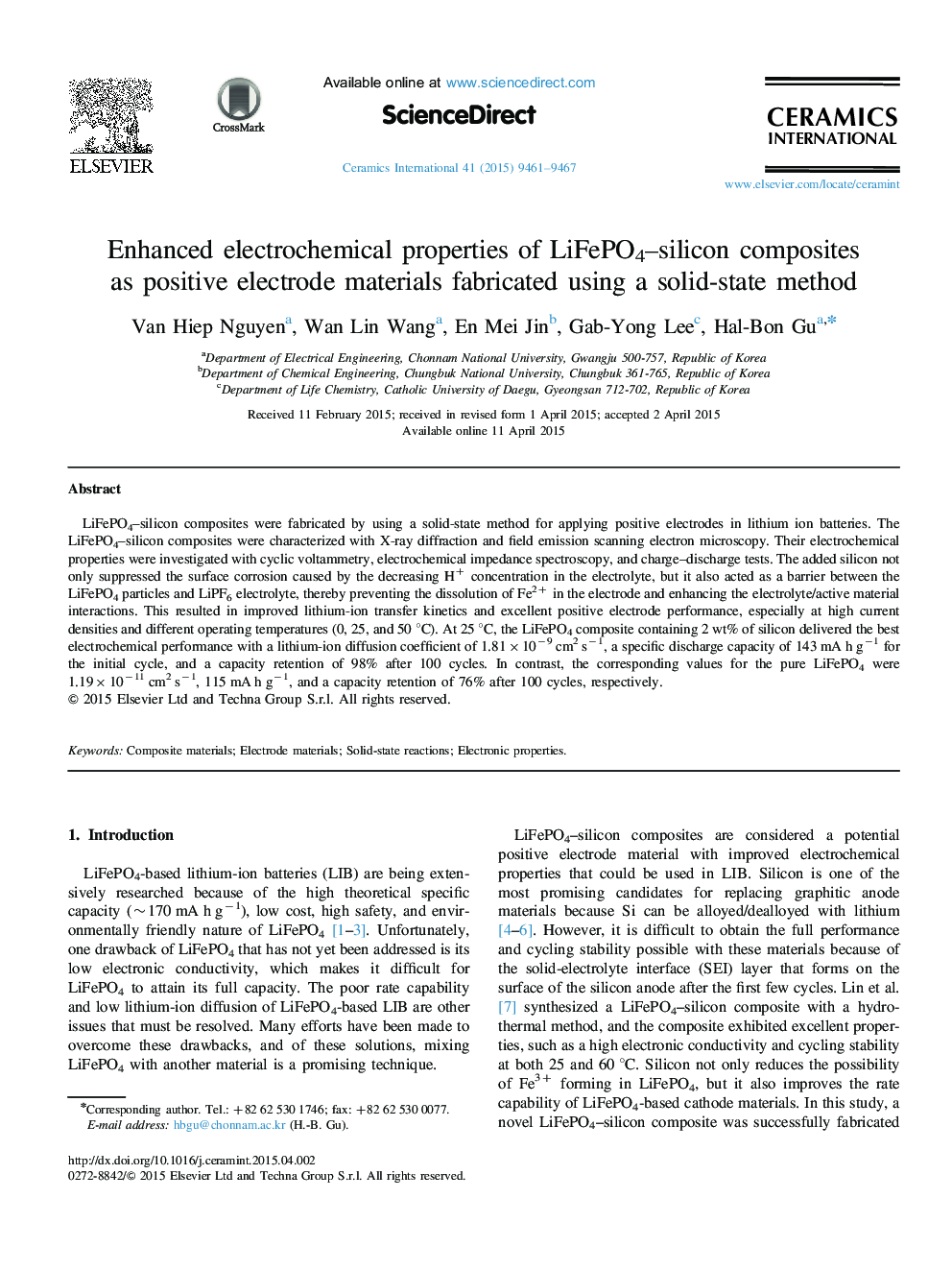| Article ID | Journal | Published Year | Pages | File Type |
|---|---|---|---|---|
| 1460220 | Ceramics International | 2015 | 7 Pages |
LiFePO4–silicon composites were fabricated by using a solid-state method for applying positive electrodes in lithium ion batteries. The LiFePO4–silicon composites were characterized with X-ray diffraction and field emission scanning electron microscopy. Their electrochemical properties were investigated with cyclic voltammetry, electrochemical impedance spectroscopy, and charge–discharge tests. The added silicon not only suppressed the surface corrosion caused by the decreasing H+ concentration in the electrolyte, but it also acted as a barrier between the LiFePO4 particles and LiPF6 electrolyte, thereby preventing the dissolution of Fe2+ in the electrode and enhancing the electrolyte/active material interactions. This resulted in improved lithium-ion transfer kinetics and excellent positive electrode performance, especially at high current densities and different operating temperatures (0, 25, and 50 °C). At 25 °C, the LiFePO4 composite containing 2 wt% of silicon delivered the best electrochemical performance with a lithium-ion diffusion coefficient of 1.81×10−9 cm2 s−1, a specific discharge capacity of 143 mA h g−1 for the initial cycle, and a capacity retention of 98% after 100 cycles. In contrast, the corresponding values for the pure LiFePO4 were 1.19×10−11 cm2 s−1, 115 mA h g−1, and a capacity retention of 76% after 100 cycles, respectively.
